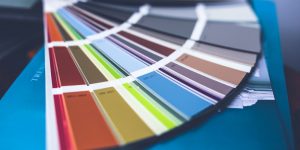Designing an interface presents an ever-changing list of difficulties and problems you need to solve in order to transfer information over to the end-user, lead him to your goal, by avoiding his dispersion throughout the service.
It can be a highly delicate journey filled with various obstacles until you get to the final design.
The idea that a real person will one day use your product should always be in the back of your mind – while designing, brainstorming or coming up with the overall idea.
How The User Thinks
Delivering on a pleasant user experience is one of the most important things you should focus on.
The real key to a great user journey comes from understanding how the user thinks – so that you can (in a way) think for them and guide their actions in the best possible way until they reach their destination.
Understanding the way a user thinks should never be that complicated – you should always start with yourselves!
-
What do you want from the application you use on a daily basis?
-
What do you expect from the tools that help you get your job done?
You differ in nothing to the people that will one day use your product.
We all want the same thing: to love the products we use, to use them with ease and to do so without a steep learning curve.
Understanding this need for a seamless flow of actions towards a singular goal is natural, and it should come to the designer and user intuitively, both in the creative process as well as in the real world.
You should always anticipate possible obstacles on the user’s road to information and in the best case scenario prevent any obstacles from appearing at all.
Too Much Information Leads To Dispersion
Bad design and interface reflects immensely in the user experience. Which is, in a highly competitive landscape, a potential factor of failure for an online business.
To deliver value, modern services must convey innovative features, and large amounts of information. This process can be extremely complicated at times when the number of features exceeds the limited space that can be designed. Bad decisions during this process can have an effect similar to an avalanche, it is almost never just one bad thing in a sea of good ones, it starts to pile up and one decision draws with itself another until you find yourself with a product no one will enjoy using.
For instance, isn’t it true that we all get frustrated when things take more of our time than we had anticipated, or when we use a product that works differently than what we have been accustomed to? Frustration is painful, but dispersion is even worse for your business.
Leading the user in such a way that they neither lose attention, nor stray off their path through your service is not an easy task. Allowing your users to get their job done in the fastest and easiest way possible should always be at the forefront of the design process. Leaving your users lost in an ocean of buttons and menus without any logical next step leads to dispersion.
What can you do to fix that?
Distinguishing good and poor Design
The services we use the most are most often the ones that speak to us directly. Without hesitation and without wasting our time – they always deliver on what we expected, time after time.
We might not notice at first why is it that we enjoy them so much, or why we feel so good when we use them but it is never a coincidence. When we use something that has been designed and thought through in great detail, we always feel the same emotion, we all think “Wow!”. We might not always know exactly what is it that attracts us so much, we just know that we want to use it again as soon as possible and that is a trademark of good design. Evoking that emotion should be the goal of every endeavour you undertake.
Those factors that make us react in a good manner are always a result from a long and thorough design process.
You will never notice that a product is well-designed at the first glance. It will only appear to you after some time of recurrent usage when you will realize how addicted to it you became.
Those are the services, websites and apps that we come back to, almost integrating them into our daily lives exactly because they have a place in our everyday functioning.
The best design is the one you don’t even notice at first.
On the other hand, we all know the feeling of the use of a poorly designed product.
No matter how big of an effort we might invest, we will never use them for too long. We often notice every single detail – we feel that the text is too small or that there is too much of it, the colours used clash with every other element and strain our eyes. It’s slow and not responsive enough, and it takes an incredible amount of time and patience to get to where we were headed.
There should exist a variety of very clear paths that the user can take in order to fulfil whatever is the purpose or your product, and reach the outcome you expect from them. It means you actually delivered the value you were expecting to deliver.
Delivering on these promises is incredibly important.
What To Keep In Mind While Designing A Product
The user should never go through several buttons and pages just in order to get a simple information, or reach the outcome of whatever he tries to achieve. This would generate dispersion in the user journey, and as a result, what you are adding here is only an undesired number of breaks in the flow. Everything but value.
You must try to avoid the temptation of overusing buttons and hidden menus (as well as other means of organising content) since it has a far greater impact on the user experience than you might have thought in the beginning.
You have to present your information in an attractive way, while also “releasing” it in a short time frame – in other words, the user shouldn’t wander around your application for too long before getting to their goal.
Your design process should never be thoughtless and mechanical. Clarity of information and ease-of-use are the main elements that should be guiding your design, since they will shape the user experience into something unique and enjoyable.
You should also think of the context in which people will use the service. Someone might want to use just a fraction of the service, or they might want to use it in a hurry – the UX should allow them to perform the action as soon as possible no matter what their agenda might be.
Buttons should never interrupt the journey your users are on. They should have a serviceable effect, helping them when it is most necessary.
Buttons Draw Routes. Take The Right Direction!
Designing the user’s journey is a delicate process. Drawing routes within your product must be done with care, with the user’s only benefit in mind.
Here are some good UX practices you should follow:
-
Develop a visual hierarchy – If you have an important message you want to get across it should be front and center. They should only exist where the user intuitively thinks they should be.
-
Guide the user’s attention – The elements you use to guide the user should be extremely compelling, inviting them to go further “down the rabbit hole”.
-
Make the main direction obvious – You cannot have multiple visually similar elements that have the same weight. The most important element should be the most noticeable – don’t make the user guess where they should be going.
-
Always challenge your own product – Use your product yourself, or perform User Research with relatives, actual users, hired testers. Carefully note down how it feels using it. If frustration appears then something should obviously be changed.
-
Detect, understand, prioritize – Establish where are those critical points that generate the most dispersion and analyze what is the main reason behind it. The main goal is to create the easiest and most logical routes for the user to take, removing any obstacle that might cause dispersion.
Don’t be afraid to think outside the box. Be bold, be different and above all – always try to understand the needs of your customers. Think for them so they won’t have to. Saving customers’ time and energy is a duty. Anticipate their next move and wish so that they might achieve it twice as fast.

 Psychology of Choice applied to Web & App Design: Convince Clients!
Psychology of Choice applied to Web & App Design: Convince Clients! The Buyer Journey: Nothing More Than a Series of Questions To Answer
The Buyer Journey: Nothing More Than a Series of Questions To Answer A Simple UX Process To Deliver And Maintain Better UX
A Simple UX Process To Deliver And Maintain Better UX